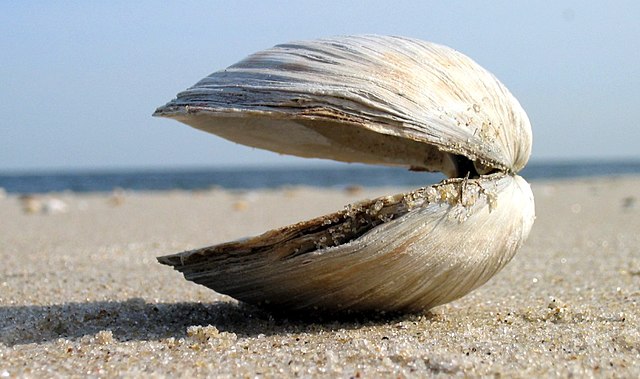Clam digging is a North American term for a common way to harvest clams from below the surface of the tidal sand flats or mud flats where they live. It is done both recreationally and commercially. Commercial digging in the U.S. and Canada is colloquially referred to as clamming, and is done by a clammer.
Two clammers on the Oregon Coast
Two people digging for clams on Cape Cod, Massachusetts in 2008
Clam digging on Long Island, 1957 (photo by Toni Frissell)
Clam digging in Haneda, 1937
Clam is a common name for several kinds of bivalve molluscs. The word is often applied only to those that are edible and live as infauna, spending most of their lives halfway buried in the sand of the seafloor or riverbeds. Clams have two shells of equal size connected by two adductor muscles and have a powerful burrowing foot. They live in both freshwater and marine environments; in salt water they prefer to burrow down into the mud and the turbidity of the water required varies with species and location; the greatest diversity of these is in North America.
A clam shell (species Spisula solidissima) at Sandy Hook, New Jersey
Littleneck clams, small hard clams, species Mercenaria mercenaria
A clam dish
Clams simmering in a white wine sauce








